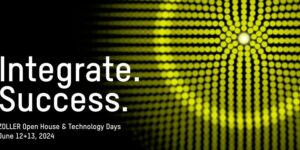Trophy Work: Moving from Art to Part
Check out how Blue Chip Engineering was able to engineer and machine a complex, mobile sculpture for renowned designer Tom Shannon using advanced CADCAM software from Gibbs and Associates.
Posted: August 22, 2012
Clinton provided Blue Chip the design and “seed pattern” for the holes in a Cadkey file, which Denny transferred into SolidWorks to create a solid model, duplicate the hole pattern across the spherical surface, use mass properties to physically balance components, and provide machinable models for programming a 5-axis machine tool with GibbsCAM.
http://youtu.be/8eRmN03xIWY
The upper sphere must be machined as two hemispheres. The two pieces could not be brazed or epoxied together because access to the interior surface would be required for dusting or re-polishing. This created the most difficult part of the project, which was matching the two halves while maintaining continuity of the hole patterns. Once resolved, machining could begin.
As with all Shannon sculptures, the visible and highly reflective components begin as solid 2024 aluminum billet. Programming the general machining was easy, but, explains Denny, “Programming the holes would have been a nightmare, had it not been for the combination of SolidWorks and GibbsCAM, which give us a lot of power.”
GibbsCAM has a utility called Hole Manager, which simplifies and automates hole-making operations, which can often be achieved with three mouse clicks. Hole Manager automatically recognizes holes by characteristics assigned within SolidWorks, puts a point at the center of each hole, and provides a normal vector to the hole. The points and normal vectors are used by GibbsCAM to program the proper tool rotation to perform the specified hole operations – boring, drilling, tapping and countersinking.
This is especially useful when holes to be made are on multiple planes, such as the infinite number of possibilities presented by spheres. “Programming 1,100 holes for 5-axis machining was still difficult, and I spent a lot of time doing it,” notes Denny, “but it wasn’t the nightmare it would have been without these software tools.”
After machining, polishing each hemisphere was extremely time-consuming, requiring several steps with progressively finer grit, to leave perfectly spherical reflective surfaces. As with procedures in using SolidWorks and GibbsCAM, Blue Chip has developed processes for polishing to pass Shannon’s scrutinizing eye. Even so, there’s one task that has yet to be simplified and automated: After polishing each hemisphere, the shop spends five hours cleaning to remove polishing compound from all of the holes. “You just sit down with an electric drill and a million Q-tips, and get it done,” smiles Denny.









